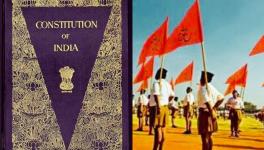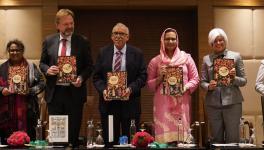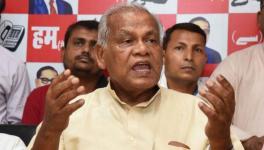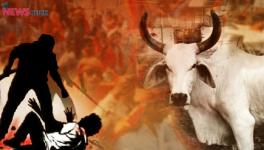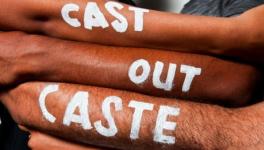India, the New Lynchdom
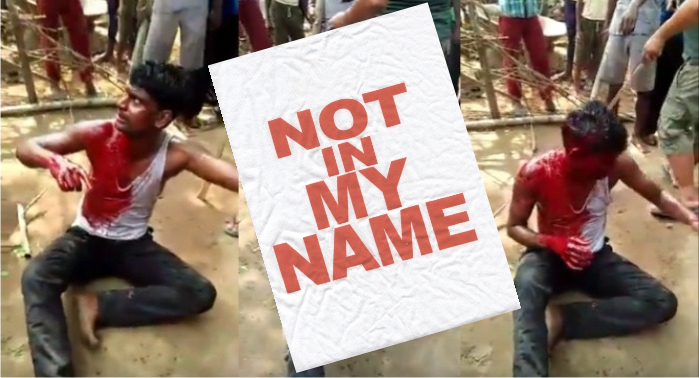
Martin Luther King Jr. said that law may not be able to make a man love him but it can keep the man from lynching him.
These words were said by Martin Luther King Jr. in the era where the racial segregation was at its peak and the African Americans were being targeted in the form of lynching. Lynching of the marginalised African American was a hate crime which mirrored the fissures in the American society. However, these words resonate strongly in the present day India where lynching the Muslims, Dalits and the other marginalised is the new ‘normal’. Innocent citizens are targeted by mobs driven by an ideology which subscribes to hatred for the ‘other’, thus wanting to dehumanise and demonise the ‘other’. Fear of the ‘other’ is instilled within the community through clever propaganda using social media and traditional media. Passions, fear and hatred of the mobs are incited through emotional issues like cow protection; friendship between a male and a female belonging to different religions stigmatised as “love jihad”. These, ironically are also litmus tests for nationalism or creating insecurity and fear that innocent children are being kidnapped or theft is committed. As per data compiled by the Ministry of Home Affairs, 45 persons were killed in 40 cases of mob lynching across nine states between 2014 and March 3, 2018, reported Hindustan Times.
The extent of this violence can be gauged from the numbers that emerge from the monitoring done by Centre for Study of Society and Secularism (CSSS). CSSS has been monitoring three newspapers – the Mumbai editions of The Hindu, Times of India, and The Indian Express. CSSS found, based on the reporting of these newspapers, that from January 2014 to July 31, 2018, 109 incidents of mob lynching have taken place in India. These 109 incidents include bovine-related vigilantism, “love jihad” vigilantism, vigilantism around the rumours of child lifting, violence related to identity markers like skull caps and also incidents where people were forced to chant Hindu supremacist slogans. Out of the 109 incidents, 22 incidents took place in Maharashtra, followed by Uttar Pradesh (19) and Jharkhand (10) (Table 1). All the three states are BJP-ruled states.

In these 109 incidents, 78 persons were killed and 174 injured (Table 2 & 3). Out of the 78 persons killed, 32 are Muslims, 21 Hindus, 6 are Dalits, 2 STs and in 17 cases, the community of the deceased was not specified. Similarly, out of the 174 injured persons, 64 were Muslims, 42 Dalits, 21 Hindus, 6 Adivasis injured and the community of the injured in 41 cases was not specified.
Table 2: No. of individuals killed in mob lynching incidents from 2014 to 31st July 2018.

Table 3: No. of individuals injured in mob lynching incidents from 2014 to 31st July 2018.

This shows that Muslims and Dalits are targeted more than others in mob lynching violence.
CSSS found that there is a steady increase in the incidents of mob lynching since 2014. The Prime Minister Modi’s mild disapproval of mob lynching incidents did not have any effect on those indulging in it (Table: 4). The disapproval was not followed up with adequate actions mandated by law against those indulging in mob lynching, particularly, in the BJP-ruled states.
Table 4: Year wise incidents of mob lynching

This is an alarming trend, and shows the increasing impunity enjoyed by the vigilante groups. Not surprisingly, 82 out of the 109 incidents have taken place in the BJP-ruled states, nine under the Samajwadi Party regime, five under Congress regimes and four under Trinamool Congress regime. (Table: 5).
Table 5: Regime wise incidents of mob lynchings.

Thirty-nine of the 109 incidents are related to rumours of child lifting, 39 to bovine vigilantism and 14 related to “inter-religious friendship between a male and a female” (Table: 6).
Table 6: Rumour/accusation for which persons were lynched

Approximately 42 per cent of the incidents of mob lynching are related to bovine vigilantism and rumours of child lifting each. Other reasons include rumours or suspicions of theft, refusal to chant Hindu supremacist slogans etc.
Supreme Court judgment
In response to this trend, the Supreme Court recently passed a judgment in Tehseen S. Poonawalla vs Union of India onJuly 17, 2018. In this judgment, the judges, while condemning the acts of lynching, laid down certain mechanisms to prevent and punish such acts. The judgment emphasises on prevention, remedial and punitive measures. The judgment is timely and important for two reasons. Firstly, the judgment unequivocally condemns this trend of spiralling violence and explains how it is unconstitutional, undermines democratic institutions and is a threat to pluralism. Secondly, the judgment lays down mechanism to deal with the incidents of mob lynching. However, the judgment misses some issues which will be discussed later.
At the very outset, the judgment reaffirms the supremacy of law in a civilised society. The judgment critiques the role of the so called self-proclaimed protectors of laws who take law in their own hands and dispense ‘justice’ to victims they assume have committed a crime. The judgment pointed out to the seminal principle in law that a person is entitled to be treated as innocent till found guilty after a fair trial. No person, group of persons or community can deny a fair trial to an accused person.
The senior counsel for the petitioner in the case, Indira Jaisingh expressed concern that the incidents of mob lynching are targeting citizens belonging to minority communities and lower strata of the society and that the state or the central government must take steps to ensure such incidents are prevented. The judgment reiterated that it is the duty of the State to prevent communal violence and should enquire into the causes of communal unrest and strengthen the fabric of society. Vigilantism could not be tolerated in any form. Juxtaposing the lynching against the Constitution of India, the judgment points out that lynching undermines the legal institutions laid down by the Constitution. The acts of lynching are linked to hate crimes which result from the intolerance, ideological domination and prejudice. The judgment makes it clear that vigilantism, including cow vigilantism, should not take place in the country and it goes against the very grain of law.
The judgment makes a crucial point about the desirability of diversity and pluralism and states that vigilantism is a threat to pluralism. In a political discourse, which is so divisive and intends at polarising the populace by hate mongering, this judgment reaffirms the saliency of diversity and tolerance, and calls them the building blocks of a democratic society. It goes on to note that in a constitutional democracy, the right to life and liberty is paramount. It reminds the State that it has a positive obligation to protect the fundamental rights of all individuals irrespective of race, caste, class and religion. The State, it adds, has the primary responsibility to foster a secular, pluralistic and multi-culturalistic social order to allow free play of ideas and beliefs and co-existence of mutually contradictory perspectives. Making a distinction between mob lynching and other ordinary crimes, the judgment points out, that the dominant intent and actual result of the lynching is two-fold. One, to usurp the authority of administering justice according to the law of the land, and second, to deprive the citizens the enjoyment of rights mentioned in the Constitution.
Critique of the judgement
This brings us to the critique of the judgment based on the how the mob lynching takes place. The judgment speaks about the lofty ideals of pluralism and puts the onus of protecting the citizens’ fundamental rights onto the State – irrespective of the caste, class and religion of the citizens. However, the judgement stops short of noting that the mob lynchings are organised crimes patronised by the leaders of the ruling regime and dominant political ideology of the ruling party provides justification for mob lynching. This is obvious from the statements of the elected Constitutional functionaries and the consequent negligent action or rather inaction by the police. While some political functionaries undermine the seriousness of the offence, others justify the act. Union Minister Jayant Sinha last month garlanded eight persons convicted of lynching Alimuddin Ansari in Jharkhand last year (Tewary, 2018). Ansari was lynched by these vigilantes, who accused him of cow slaughter. Another Union Minister, Arjun Ram Meghwal stated that incidents of lynching will continue with the rise in the popularity of Prime Minister Modi, hinting at conspiracy to defame the BJP (Ahuja, 2018). This displays complete denial by the minister that such monstrosity is taking place when asked his reaction about the lynching of a Muslim man in Alwar. Justifying cow vigilantism, BJP leader, Gyan Dev Ahuja, said,“Cow slaughtering is a bigger crime than terrorism. Terrorists kill two to three people, but when a cow is killed, sentiments of crores of Hindus get hurt (Hindustan Times, 2018).”
Looking at the above statements, it can be safely deduced that the government is not serious about stopping the lynching. The act of lynching is enjoying political patronage and impunity and thus thrives. This aspect is not addressed by the judgment. The cases of lynching are not isolated cases, but manifestations of a political ideology and a discourse that is aggressively planted in the social consciousness. The lynching is justified by creating hatred and distrust around symbols like cow and children against marginalised communities. This hatred is normalised when the state machinery and also representatives give it legitimacy by taking no action. The judgment should have clarified that all those who supply any justification for mob lynching, in effect, abet the crime, and they should be tried for abetment of the offence. Those who prepare alarming videos and fake news to arouse anxieties of ordinary people, which then leads to mob lynching; those who circulate these videos and messages on social media have a common intention with those who eventually get involved in mob lynching, and persons having common intention are also guilty of the offence and must be tried for the offence.
It is imperative to cover the political leadership under the purview of any law to effectively stop mob lynching in order to monitor the role of police. The police have been appalling in their response. In many cases, the police are seen colluding with the mob. Thus, they either take no action to protect the victims or blatantly help the mob to perpetuate violence. Take for example the recent two incidents. In Hapur, the police are seen walking in front of the mob which is dragging the victim while the victim is pleading for help and mercy! In the case of Alwar, the police took over three hours to take the victim to the hospital which was only five kilometre away. This cost the victim his life. While it is no secret that police have their own bias, the problem is compounded by the political ideology of the political leadership. Police follow the diktats of their political bosses. Though the judgment orders that a nodal officer is to be appointed in each district who will try to prevent mob lynching and in case such incidents take place, take remedial measures, the police can be impartial if they there not under the influence of the political leadership, and are aware that any partiality or bias resulting in failure of their duty will attract consequences.
The objective of the judgment to prevent and penalise the culprits of mob lynching and arresting this ghastly trend will not be achieved with the above mentioned lapses and lacunae in the judgment. They are too fundamental to be ignored. Mob lynching with the monstrous proportions is demonising Muslims and Dalits, tearing the social fabric of the country. Not only does it weaken the social harmony of the country, but also undermines democratic and Constitutional institutions which safeguard the life and liberties of the citizens, and prevent the spiralling decay of the society to turn into a barbarian one. Mob lynching is not merely a problem of law and order, but is a heinous political tool to exclude and marginalise the vulnerable communities. As rightly pointed out by social activist Irfan Engineer, “Mob lynching seems to be continuation of pattern of low intensity communal violence. The innocuous looking isolated incidents of mob lynching are in fact new pattern of low intensity communal violence. The objectives of sustained communal polarization can now be achieved by this method”. This politics of hatred must be countered, and one hopes that this judgment of the Supreme Court will prove to be instrumental to stop this insanity and quest for blood. In order to end this article, one can return to this stark and hard-hitting poem by Esther Popel, which describes the similar bloodthirsty politics in America in the time of apartheid and racial segregation and morbidity and dehumanisation that accompanied it, and what may be the fate facing Indian society.
“I pledge allegiance to the flag”
They dragged him naked through the muddy streets, a feeble-minded black boy!
And the charge? Supposed assault upon an aged woman!
“Of the United States of America”— One mile they dragged him
Like a sack of meal, A rope around his neck, a bloody ear
Left dangling by the patriotic hand Of Nordic youth! (A boy of seventeen!)
“And to the Republic for which it stands”— And then they hanged his body to a tree,
Below the window of the county judge whose pleadings for that battered human flesh
Were stifled by the brutish, raucous howls of men, and boys, and women with their babes,
Brought out to see the bloody spectacle Of murder in the style of ’33!
(Three thousand strong, they were!)
"One Nation, Indivisible”—To make the tale complete they built a fire— What matters that the stuff they burned was flesh—and bone—and hair—And reeking gasoline!
"With Liberty—and Justice”— they cut the rope in bits and passed them out, for souvenirs, among the men and boys!
The teeth no doubt, on golden chains will hang about the favored necks of sweethearts, wives,
And daughters, mothers, sisters, babies, too!
Get the latest reports & analysis with people's perspective on Protests, movements & deep analytical videos, discussions of the current affairs in your Telegram app. Subscribe to NewsClick's Telegram channel & get Real-Time updates on stories, as they get published on our website.









